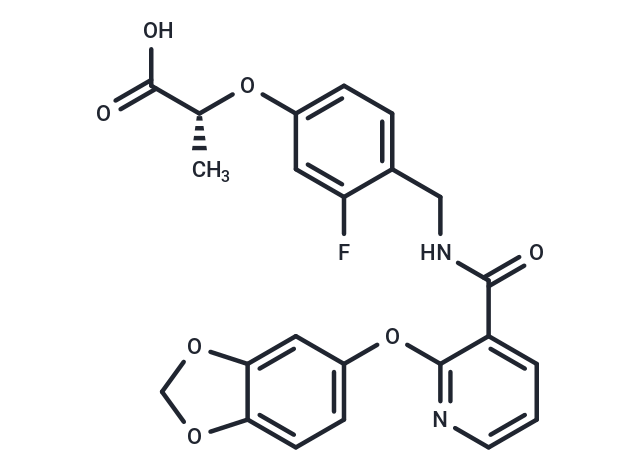Shopping Cart
- Remove All
 Your shopping cart is currently empty
Your shopping cart is currently empty

CP671305 is an orally active, potent and selective inhibitor of phosphodiesterase-4-D.

| Pack Size | Price | Availability | Quantity |
|---|---|---|---|
| 1 mg | $31 | In Stock | |
| 5 mg | $80 | In Stock | |
| 10 mg | $122 | In Stock | |
| 25 mg | $198 | In Stock | |
| 50 mg | $369 | In Stock | |
| 100 mg | $549 | In Stock | |
| 1 mL x 10 mM (in DMSO) | $85 | In Stock |
| Description | CP671305 is an orally active, potent and selective inhibitor of phosphodiesterase-4-D. |
| In vitro | CP-671,305 is a substrate of human OATP2B1 with a high affinity (Km=4 μM) but not a substrate for human OATP1B1 or OATP1B3. CP-671,305 is identified as a substrate of MRP2 and BCRP, but not MDR1. CP-671,305 displays high affinity (Km=12 μM) for rat hepatic Oatp1a4. CP-671,305 does not exhibit competitive inhibition of the five major cytochrome P450 enzymes, namely CYP1A2, 2C9, 2C19, 2D6 and 3A4 (IC50s >?50 μM). Likewise, no time-dependent inactivation of the five major cytochrome P450 enzymes is discernible with CP-671,305. |
| In vivo | The pharmacokinetics of CP-671,305 are largely unaltered, and compromised biliary clearance of CP-671,305 is compensated by increased urinary clearance. CP-671,305 demonstrates generally favourable pharmacokinetic properties, systemic plasma clearance after intravenous administration is low in Sprague-Dawley rats (9.60?±?1.16?mL/min/kg), beagle dogs (2.90?±?0.81?mL/min/kg) and cynomolgus monkeys (2.94?±?0.87?mL/min/kg) resulting in plasma half-lives >?5?h. Moderate to high bioavailability in rats (43-80%), dogs (45%) and monkeys (26%) is observed after oral dosing. In rats, oral pharmacokinetics are dose dependent over the dose range studied (10 and 25?mg/kg). |
| Animal Research | Jugular vein cannulated and bile duct-exteriorized male Sprague-Dawley rats (230-250 g) are used in the assay. All animals are fasted overnight before dosing, whereas access to water is provided ad libitum. Animals are fed following collection of the 2-h blood samples. CP-671,305 (3 mg/kg) in glycerol formal is administered intravenously (i.v.) via the jugular vein to three rats over 30 s, and serial plasma samples are collected before dosing and 0.033, 0.15, 0.5, 1, 2, 4, 6, 8, and 24 h after dosing. All plasma samples are kept frozen until analysis. In addition, an i.v. dose of 3 mg/kg is also given to bile duct-exteriorized rats (n=3), where plasma, bile, and urine samples are collected on ice for up to 24 h and stored at -20°C until analysis. For the DDI studies, cyclosporin A (20 mg/kg in glycerol formal) is administered i.v. 30 min before intravenous administration of CP-671,305. Rifampicin (50 mg/kg) in saline is administered i.v. 5 min before the administration of CP-671,305. Plasma samples from the various pharmacokinetic studies are generated by centrifugation at 3000 rpm for 10 min at 4°C. Samples are stored at -20°C, pending analysis by LC-MS/MS. |
| Molecular Weight | 454.4 |
| Formula | C23H19FN2O7 |
| Cas No. | 445295-04-5 |
| Smiles | C[C@@H](Oc1ccc(CNC(=O)c2cccnc2Oc2ccc3OCOc3c2)c(F)c1)C(O)=O |
| Relative Density. | no data available |
| Storage | Powder: -20°C for 3 years | In solvent: -80°C for 1 year | Shipping with blue ice. | |||||||||||||||||||||||||||||||||||
| Solubility Information | DMSO: > 150 mg/mL (330.11 mM) | |||||||||||||||||||||||||||||||||||
Solution Preparation Table | ||||||||||||||||||||||||||||||||||||
DMSO
| ||||||||||||||||||||||||||||||||||||

Copyright © 2015-2024 TargetMol Chemicals Inc. All Rights Reserved.